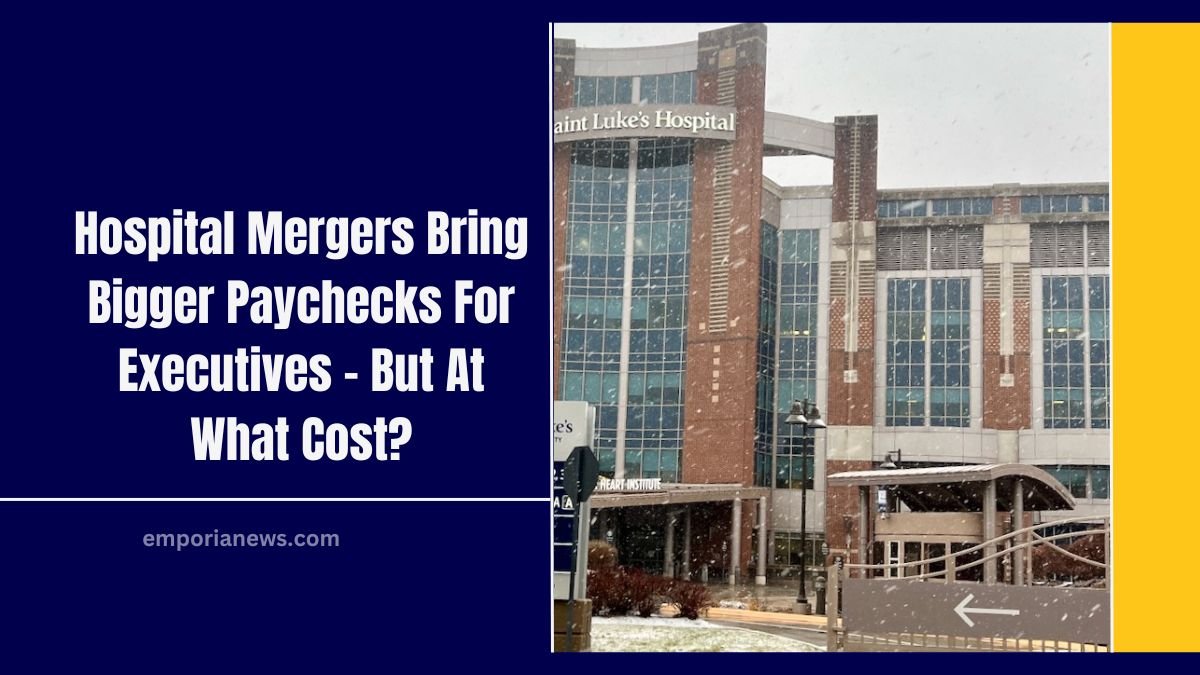Hospital mergers have become a prevalent strategy in the healthcare industry, aiming to enhance operational efficiency, expand service offerings, and improve patient care.
However, an often-overlooked consequence of these consolidations is the significant increase in executive compensation.
As hospital systems grow larger through mergers, executive paychecks tend to swell, raising questions about the allocation of resources within nonprofit healthcare organizations.
The St. Luke’s and BJC HealthCare Merger: A Case in Point
In January 2024, Kansas City-based St. Luke’s Health System merged with St. Louis-based BJC HealthCare, creating one of the nation’s largest nonprofit healthcare systems.
This merger resulted in a combined entity encompassing 24 hospitals, employing 44,000 individuals, and generating approximately $10 billion in annual revenue.
Following the merger, St. Luke’s executives received substantial increases in their compensation packages:
| Executive | Position | 2023 Total Compensation | Base Salary | Bonus | Retirement Payout |
|---|---|---|---|---|---|
| Dr. Melinda Estes | Former CEO | $4.4 million | $2 million | $1.57 million | $752,000 |
| Chuck V. Robb | Chief Financial Officer | $7.8 million | $747,000 | $1.17 million | $5.66 million |
| Julie Quirin | President (as of end of 2023) | $1.9 million | $960,000 | $521,000 | N/A |
These figures highlight a trend where hospital mergers are accompanied by significant boosts in executive compensation.
Industry-Wide Trends in Executive Compensation
The escalation in executive pay is not isolated to the St. Luke’s and BJC merger. Across the nonprofit healthcare sector, executive salaries have been on the rise, particularly in larger, consolidated systems.
A study by Rice University revealed that from 2012 to 2019, CEO compensation at independent hospitals increased by over 30%, from approximately $996,000 to $1.3 million.
CEOs overseeing health systems with more than 500 beds experienced even larger pay hikes, earning 170% more than their counterparts at smaller hospitals by 2019.
Recent surveys further corroborate this upward trajectory. SullivanCotter’s 2024 Health Care Management and Executive Compensation Survey reported a 4.6% increase in median executive base salaries, with system-level executives seeing a 5.3% rise. Incentive awards also grew, reflecting improved operational performance.
Factors Driving Increased Executive Pay
Several factors contribute to the surge in executive compensation following hospital mergers:
- Increased Organizational Complexity: Mergers result in larger, more complex health systems, necessitating executives with advanced skills to manage expanded operations.
- Market Competition for Talent: The demand for experienced leaders in the healthcare sector intensifies as systems grow, leading to competitive compensation packages to attract and retain top talent.
- Performance-Based Incentives: Executives often receive bonuses tied to financial metrics, such as profitability and revenue growth, which can be positively impacted by mergers.
- Deferred Compensation Plans: Supplemental Executive Retirement Plans (SERPs) and other deferred compensation mechanisms can lead to substantial payouts, especially during organizational transitions like mergers.
Implications for Healthcare Systems and Patients
While proponents argue that competitive executive compensation is necessary to attract skilled leaders capable of navigating the complexities of large health systems, critics contend that excessive pay may divert resources from patient care and community services.
The consolidation of hospitals can also lead to increased healthcare costs for patients, as reduced competition may result in higher prices for services.
The trend of escalating executive compensation in the wake of hospital mergers underscores the need for a balanced approach that aligns leadership incentives with the mission of nonprofit healthcare organizations.
As the healthcare landscape continues to evolve, stakeholders must critically assess how resources are allocated to ensure that patient care and community health remain at the forefront of organizational priorities.




